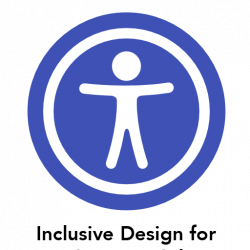Eating Disorders and Mental Health Issues
Mental health issues often carry a stigma, with eating disorders being some of the most misunderstood of all mental health conditions.

Research funding disparities, diet culture, and uninformed portrayals of mental illness contribute to the perpetuation of this stigma and confusion, complex barriers to overcome for those struggling with eating disorders, disordered eating, and other co-occurring mental health issues.
By devoting time to understand these issues better, family, friends, colleagues, and community members can reduce mental health stigma and become informed allies for those who are struggling. Even better, informed allies can become active advocates in a world that often fails to make room for individuals struggling with mental illness.
Eating Disorders and Mental Illness – What is the connection?
Eating disorders are, themselves, diagnosable mental health conditions with potentially devastating – even deadly – physical symptoms. They can wreak havoc on all areas of an individual’s life, including poor mood regulation and anxiety, diminished ability to focus on or be productive at work or school, and withdrawal from social interactions. There are multiple eating disorder diagnoses listed in the DSM-5, all with distinct similarities and some key differences.
How Do I Know if I Have an Eating Disorder?
Of all known mental health issues, eating disorders are particularly challenging to treat. It can be highly challenging to validate eating disorder concerns and get help, not only because of the stigma attached but because diet culture has normalized – even glorified – disordered eating and continues to equate thinness to health and beauty.
Eating Disorder Signs and Symptoms
Some common eating disorder signs and symptoms include:
- Fixation on weight loss or extreme concern with body image
- Restrictive diets, such as no-sugar diets or keto
- Laxative, diuretic, and/or diet pill abuse to lose weight
- Feeling overweight regardless of weight loss.
- Low body weight
- Fixation on food rules and only eating “clean foods.”
- Skipping meals or eating small amounts of food
- Eating large amounts of food during short periods while alone.
- Frequently looking in the mirror to check body size or shape.
- Excessive exercise
- Feeling the need to purge after meals.
- Digestive issues and discomfort
- Listlessness or fatigue
- Feelings of guilt, anxiety, sadness, or disgust after eating
Understanding Mental Health Impact of Eating Disorders
Eating disorders are dangerous mental illnesses. They disrupt how individuals think, feel, and behave; this creates isolation, hopelessness, and codependency. It is not uncommon for those who struggle with eating disorders to try to bargain, negotiate, and ultimately coexist with their eating disorder. Struggling long-term exacerbates eating disorders symptoms and risks in all areas of an individual’s life.
Are All Eating Disorders Mental Illnesses?
As we’ve been discussing, although eating disorders cause serious physical harm and often require medical attention, they are indeed mental illnesses. In fact, eating disorders are among the most deadly known mental illnesses, along with substance abuse and opioid overdose.
What Qualifies as a Mental Illness?
Mental illnesses, also called mental health disorders, refer to a spectrum of diagnoses that affect one’s mood, thinking, behavior, and usually interpersonal skills and relationships as well. Some examples of mental illness include depression, anxiety disorders, schizophrenia, eating disorders, and addictive behaviors.
Most of us experience mental health concerns such as burnout, situational depression after a loss, or even trauma. In these cases, basic mental hygiene, therapy, or just taking a mindful break may be sufficient to help mitigate any permanent harm until the individual heals and starts to feel like themself again.
A mental health concern becomes a mental illness requiring professional help when ongoing signs and symptoms build up as frequent stress, sadness, irritability, thoughts of hopelessness, and ultimately affect one’s ability to function in their life.
People with mental illnesses may often feel frustrated, like they’re always falling short of their full potential or making the same mistakes. For example, someone with an eating disorder may struggle to meet work or school requirements, follow through with social responsibilities, or favor taking care of appearances (also known as “masking”) over taking care of their health or basic life skills.
Because there’s no way to take a quick peek inside a loved one’s head, these social/behavioral signs of suffering are often the best indicators that someone struggles with a mental illness and should not be ignored.
Mental Health Issues and Stigma
Unlike physical illnesses, mental health issues are sometimes called “invisible illnesses.” While the root of a mental illness may be invisible, if you know what to look for, the symptoms of a mental illness are anything but. And while mental illness may accurately be described as “invisible,” it is crucial not to treat those struggling as though they are also unseen.
And, if you are struggling, you are definitely not alone.
Mental illness is far from being a rare occurrence; an estimated 26% of Americans ages 18 and older — about 1 in 4 adults — suffer from a diagnosable mental disorder in a given year – many of them suffering from more than one mental disorder at a given time.
Be kind to yourself. We don’t all get it right the first time when it comes to caring for a loved one with a mental illness. It is hard to understand what we can’t see and what can’t be objectively described by our loved ones. Just doing what you can to learn about the signs and treatment options is a great start.
The American Psychiatric Association explains that stigma is often a result of misunderstanding or fear, and the stigma around mental illness is no exception. Surveys confirm that people tend to view mental illnesses negatively, and it makes sense.
Mental Health Media Coverage and Stereotypes
We’ve all seen it; the media habitually avoid coverage of authentic, informative mental illness-related stories only to use mental illness as a scapegoat after incidences of extreme violence. This stereotyping is destructive, irresponsible, and ironic, as people with severe mental illnesses are far more likely to be victims than perpetrators of violence.
This misinformation and stigma cast those with mental illnesses as being dangerous people whose issues are their fault. This way of thinking may lead to increased difficulty in finding and keeping a job, making it difficult to obtain quality healthcare and mental health treatment. Stigma creates and energizes a cycle in which people with mental illnesses are shunned from opportunities and resources, struggle to meet basic needs, and are subsequently judged or shamed for being different, making it that much harder to dust themselves off and try again.
The harm doesn’t stop with external situations. Mental health stigma can also lead to low self-esteem, hopelessness, low motivation for treatment, or a feeling of unworthiness; “why bother?”
Judgment and misinformation are the last things anyone needs when struggling with an eating disorder or other mental illness. And considering the prevalence of mental health issues in our society, there’s absolutely no reason to keep these issues in the dark and every reason to shine a light of awareness.
Family Support and Mental Illness
It is vital for loved one’s to know that the time when someone with mental health issues needs help the most is often the time they’re least open to it. It is equally crucial to remember that impaired cognitive and executive functions are not uncommon side effects of eating disorders, so those struggling may lack the ability to arrive at a healthy conclusion without the patience and persistence of their support network.
Mental Health Statistics
- Mental illness doesn’t discriminate. People of all genders, ages, races, and ethnicities are vulnerable to mental health issues.
- Of the many mental health diagnoses we know of, the most common conditions are depression and PTSD.
- In the U.S., 8% of adults dealing with mental illness struggled with depression, and 4% were dealing with PTSD.
- Eating disorders affect about 9% of the world but are more prevalent among female-identifying individuals.
- Boys and men also struggle, with gay men experiencing eating disorders at a higher rate than straight males.
- 44% of LGBTQ+ adults report experiencing mental illness.
- 32% of adults who are multiracial report having mental health concerns.
Eating Disorder Myth-Busting
Misunderstanding or lack of education is a significant contributor to mental health stigma. The many myths circulating about eating disorders ultimately prevent people from getting the help they need. Time to bust some of those myths!
Eating Disorders are a choice.
False! Various factors contribute to the development of an eating disorder, but choice is not one of them.
Everyone has an eating disorder. Americans overeat, so unhealthy!
Nope! Are we as a society generally obsessed with eating and weight? Yes. But it’s not accurate to say that everyone who occasionally- event frequently- eats past feeling full has an eating disorder. Eating disorders are severe medical and psychiatric conditions that shouldn’t be minimized.
Anorexia is the only eating disorder that’s dangerous.
Not true! Even though Anorexia is one of the deadliest mental illnesses, bulimia and OSFED also have high rates of medical complications, including death.
There are so many lies about eating disorders out there. To keep busting some myths, visit NEDA here.
Eating Disorders Statistics
There’s so much to know about eating disorders. They are complex conditions wrapped up with layers of shame, confusion, and diet culture propaganda. Here are some facts from the National Association of Anorexia Nervosa and Associated Disorders to jump-start your understanding:
• Eating disorders affect about 30 million people in the U.S. Of these 30 million, 20 million are women, and 10 million are men.
• Eating disorders are becoming more – not less – common.
• BIPOC are less likely to be screened for eating disorders than white people.
• Gay men are more likely to binge-eat or purge than heterosexual men.
• Every 52 minutes, at least one person dies from their eating disorder.
• Only about 6% of people with eating disorders are underweight. Weight is not the only indicator that someone is suffering.
Co-occurring Mental Health and Eating Disorder Issues
Co-occurring mental health issues indicate that someone is experiencing more than one mental health condition at the same time. This is quite common among people with eating disorders. Some of the most common mental illnesses that people with eating disorders also tend to struggle with are:
Common Co-occurring Conditions: Stats
- According to the National Center on Addiction and Substance Abuse (CASA), half of all people with eating disorders struggle with substance abuse, compared with 9% of the general population.
- Up to 35% of people who experience substance abuse or addiction have an eating disorder, compared with 3% of the general population (CASA).
Many of those who struggle with eating disorders have a co-occurring mental health condition or disorder; examples include:
- Addiction and substance abuse/dependence
- ADHD
- Anxiety disorders and phobias
- Bipolar disorder
- Depression
- Obsessive-Compulsive Disorder
- PTSD
- Self-harm
- Trauma
A pre-existing mental health condition may lead to the development of an eating disorder. Some individuals turn to certain eating disorder behaviors as a way to self-soothe or manage other mental health disorders, whether they’re consciously aware of how those behaviors are functioning or what purpose they serve or not. Either way, eating disorders cannot be effectively treated without the simultaneous treatment of co-occurring conditions.

Two-Week Summer Intensives
Virtual and in-person options for PHP/IOP

VIRTUAL TREATMENT OPTIONS
Meeting each client where they are on their recovery journey. Virtually.
Our Recommended Articles
Start the road to recovery with Alsana.







